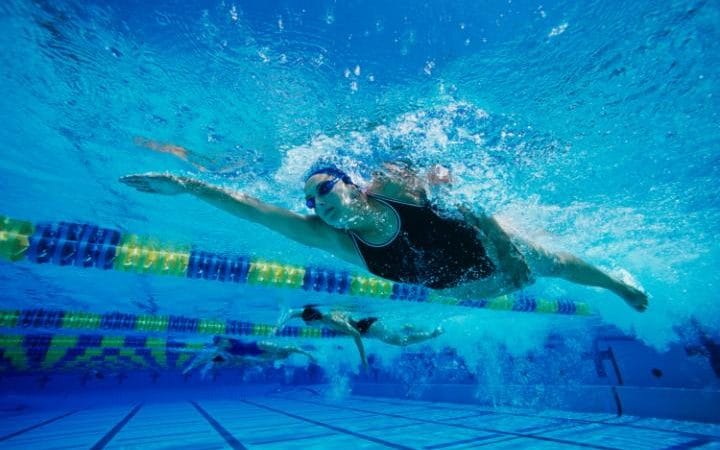|
Swimming is usually considered a risk free sport, but there are some potential injuries to keep in mind.
Shoulder Injuries Repetitive overhead arm action can create tremendous stress to the shoulder. Poor technique, excessive workload, or the use of swim paddles and pull buoys can cause different syndromes including rotator cuff tendonitis, biceps tendonitis, and subacromial tendonitis: To avoid shoulder injuries :
Neck Pain During freestyle, keep the head in line with the spine and the eyes looking straight down at the bottom of the pool. Avoid looking too far forward or lifting the head forward to breathe. During backstroke, swim distance must be increased gradually so that the anterior neck muscles have time to adapt. Low Back Pain Strong core muscles are essential, mainly abdominal muscles, which helps to sustain the body in a neutral degree of flexion/extension. Low back injuries are caused by excessive repetitive arching when performing free style, breaststroke or butterfly. Perform a gradual warm up and vary your strokes at the first sign of discomfort. Muscle Cramps Being proactive can avoid unwanted cramps, by warming up before rigorous parts of your swimming and by staying consistently hydrated. Some cramps can go away while swimming, but it is recommended to leave the pool to stretch. Cramps often occur in muscles that cross two joints, the calf muscle for example. Poor conditioning, muscle fatigue and dehydration can lead to cramps.
1 Comment
Hailey Garcia
6/8/2024 03:45:16 am
My name is Hailey Garcia and I am from New Jersey. My herpes virus turned to war after 2 years of living with it. I have tried different medical procedures to cure my herpes but to no avail. Most people think herpes is only a minor skin irritation of which herpes has long term effects on health and passes through the bloodstream and can be easily contracted through sexual intercourse. I knew I had herpes from the first day I started feeling itchy in my pubic area and the pain was very unbearable. I couldn't stand it anymore. After 2 years of trying other means to get rid of it, I had to contact Doctor Odunga to help me with a permanent cure. I saw his email and whats-app number from a testimony I read online from a lady who was also helped by him in curing infertility problems, I had faith and contacted him. He assured me of his work and I ordered his herbal medicine. Within 5 days, I didn't feel any pain anymore and within 2 weeks, my skin was all cleared and smooth. I am very grateful to you sir and I write this testimony as others have done to bring those having faith to you sir. If you have herpes or other similar disease and you want it cured, kindly contact Doctor Odunga, Whats-App (wa.me/+2348167159012) OR Email [email protected]
Reply
Leave a Reply. |

 RSS Feed
RSS Feed

